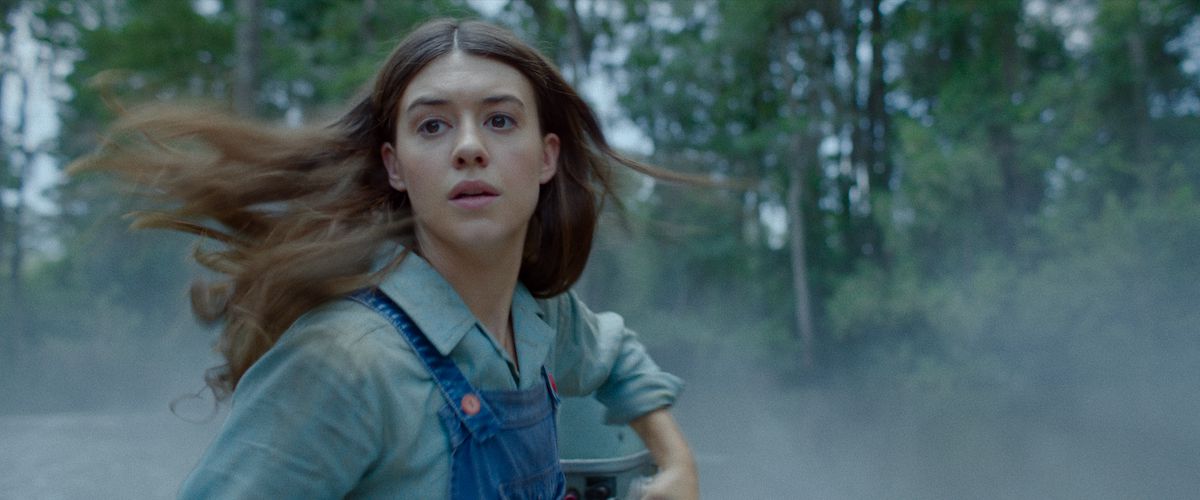By Jonah Naplan
July 15, 2022

Where the Crawdads Sing
Review: In 'Where the Crawdads Sing,' Olivia Newman adapts the beloved novel with flair and clumsiness.

By Jonah Naplan
July 15, 2022

My mom has been raving about Delia Owens’ acclaimed novel, “Where the Crawdads Sing,” ever since its publication in 2018. And so have many middle-aged women, a number of whom showed up to my screening of the book’s film adaptation today. Reese Witherspoon, yes, that Reese Witherspoon, gave the book the popularity push it needed, back four years ago, selecting it to be added to her “Book Club List” of honorary novels. I would guess the book wouldn’t have had its success today, without Witherspoon giving it that extra boost. And today in 2022, the book finally makes its way to the big screen, produced by Reese Witherspoon and her production company, Hello Sunshine, and directed by Olivia Newman. Before you read any further, I must disclose that I personally have not indulged in Ms. Owens’ novel. I went into this movie with fresh eyes, having only seen the trailer, and barely knowing anything about the story and characters.
“Where the Crawdads Sing” follows the “Marsh Girl,” aka Catherine Clark, or Kya for short, as she’s put on trial for the murder of Chase Andrews, who, as we learn, used to be her boyfriend. The film intercuts between the court trial, where she is likely to be given a life sentence in prison or even the death penalty unless proven innocent, and her life in the marsh leading up to the incident. We learn about her relationship with Chase, her relationship with another man named Tate, her childhood growing up in the marsh, her abusive father, and her friendly liaison with a couple who runs a general store. (According to my mom, Kya’s kinship with the couple is actually more fleshed out in the novel). As Kya’s lawyer is trying to prove, the death of Chase Andrews was merely an accident—he wasn’t murdered by anyone. In the film’s first scene, we see cops investigating his corpse lying near the marsh. They ascend up a tall tower, and find that one of the grates is missing. We suspect Chase absentmindedly fell through that hole, and slammed down on the ground from about an eighty foot drop. No fingerprints were found on his body, anyway. Such a huge price, just for a beautiful high-up view of the marsh.
“Where the Crawdads Sing” is a mediocre two-star movie, but is deserving of another half, due to the terrific performances from everybody, that anchor this movie in one way or another. Particular stand-outs are Daisy Edgar-Jones as Kya, and her lawyer, Tom Milton, played by the always underrated David Strathairn. As the plot unfolds, it becomes more and more important that our leads don’t shy away from pushing themselves to 110%. Luckily, the viewers don’t have to worry. The performances are about as good as you can get them in this type of late 60’s throwback mystery movie. It sometimes feels as if the actors are so familiar with the book, that they practically live and breathe like their characters. Edgar-Jones in particular, doesn’t just play Kya, she is Kya. It’s honestly kind of hard for me to imagine any other actress playing that role.
Much of what “Where the Crawdads Sing” comes down to is that while it has a brilliant production and sound design—it’s a beautiful film to look at, and most of the cinematography is transporting, as well as the constant sounds of birds and cicadas in the background—it has the common problem of prioritizing style over substance. The film frequents the artistic lens, delivering beautiful shots of the marsh landscape, and the bugs that inhabit it. Kya even starts to draw some of these insects, documenting them in picture books that she later publishes. But much of the film’s substance focuses on Kya’s love life. Some of it actually reminded me of “Death on the Nile,” with two relationships, each corresponding to each other in the end. She begins to think that maybe the men she’s spending so much time with aren’t all they’re cracked up to be. We see Kya and her couple of boyfriends make love on a sandy beach, or in her bed, back in her house, deep in the picturesque landscape of the woods surrounding the marsh. It’s actually a little bit of smart deception on the part of the filmmakers. Newman and her team of filmmakers conduct seemingly perfect shots in order to distract us from the hollowness of how this story was executed. It’s an old technique, but still one that works from time to time. As for this film, sure. I’ll give them credit.
Harris Dickinson and Taylor John Smith play Chase and Tate, Kya’s lovers, and while their performances are competent, they don’t seem to have the greatest chemistry with Edgar-Jones. Their relationships are developed, I guess, but no one does a really good job of making me suppose I should care. A good comparison is thus: it’s almost as if two politicians are combatting in a debate. They both seem like decent people, but they don’t really have the best ideas for what they are planning to do in the future. We still know we’ll vote for one of them anyway, but we aren’t all that confident about it, especially compared to how confident we could be. This film definitely means well, but it feels as if nothing it set up earlier matters anymore, with a conclusion that was explained more in the book, but is rushed through in this film. Why is it so difficult for a film like this to be so satisfying? I’m not really sure, but there’s a chance that some form of an answer could be found deep down in the marshes, somewhere near where the crawdads are belting out the entirety of “Harry’s House.” Maybe the film could have found that answer too, had it not referenced such a place, and instead explored it more thoroughly.
"Where the Crawdads Sing" is rated PG-13 for sexual content and some violence including a sexual assault. It's 125 minutes.
JONAHtheCRITIC.com